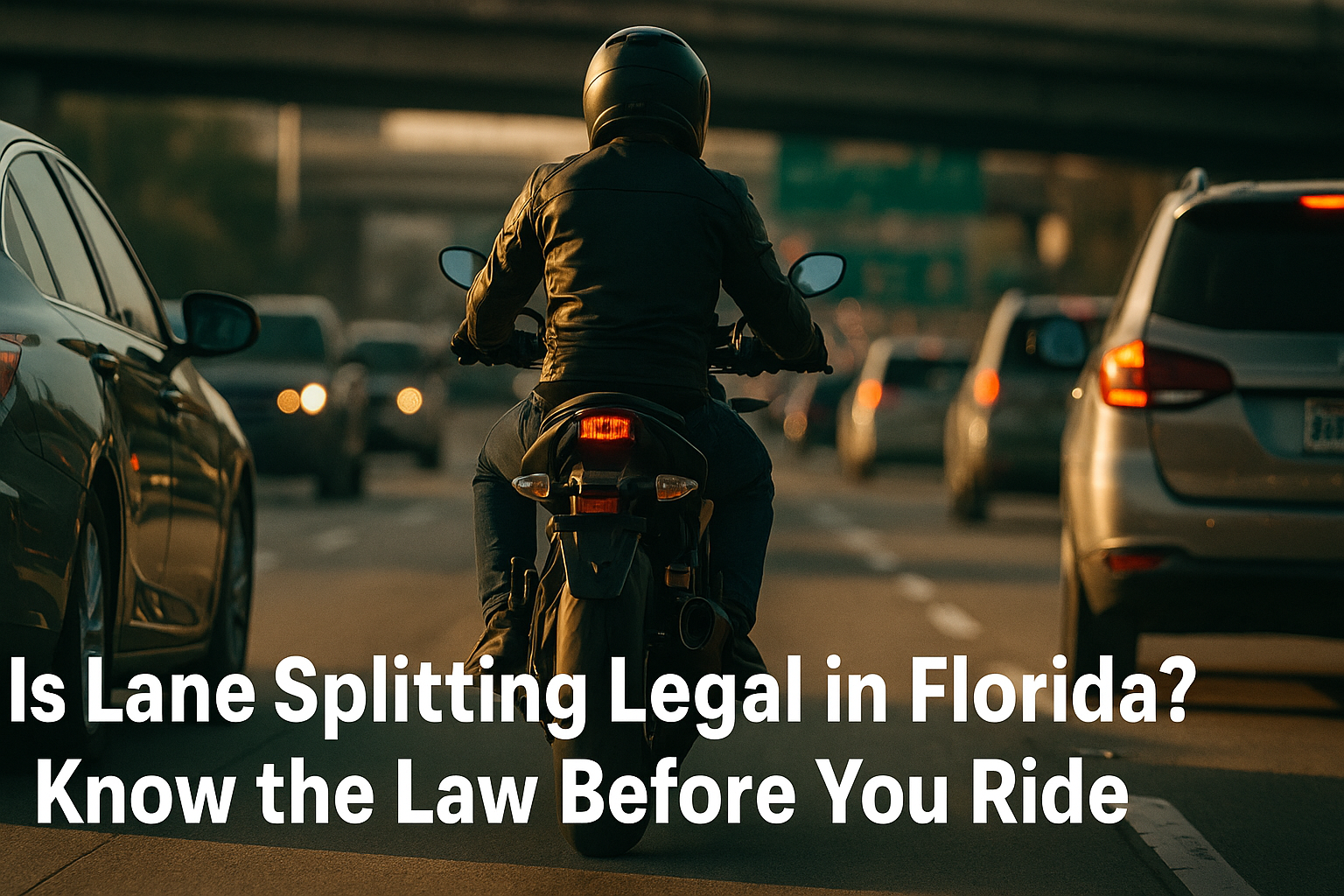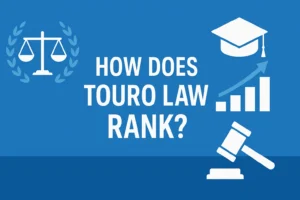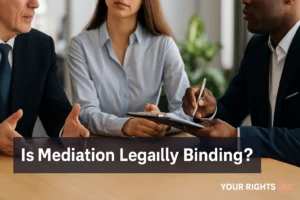Florida roads see thousands of motorcycles every day. Riders face more danger than drivers. Their bikes are small, fast, and easy to miss. Cars often stop hard or shift lanes without warning. In heavy traffic, some riders look for shortcuts. One move they try is lane splitting. This means riding between cars stuck in the same lane.
Some believe lane splitting helps avoid rear-end crashes. They also say it saves time and keeps engines from overheating. Others say it brings more danger. A car door, a sudden swerve, or a distracted driver can cause serious harm. Many drivers never expect a motorcycle to pass so close in tight lanes. This can lead to shock, mistakes, and crashes.
Florida has rules to protect all road users. Riders and drivers must follow the law. Lane splitting may seem smart in traffic, but it could lead to tickets, injury, or worse. The law in Florida is clear and strict.
This article breaks it down in simple steps. It explains what lane splitting means, why some try it, and what the law says. You will also learn what risks it brings and what happens if police catch you. Every Florida rider should know these facts before making a move that could change their life.
What Is Lane Splitting?
Lane splitting happens when a motorcycle moves between cars in slow or stopped traffic. The bike does not stay behind a car. It rides between them in the same lane. Riders often do this to avoid traffic jams or stay safe from rear-end crashes.
This is not the same as lane sharing. Lane sharing means two motorcycles ride side by side in one lane. Lane sharing is legal in some states, including Florida. Lane splitting is not. Florida law treats them as different actions.
Most drivers do not expect a motorcycle to come up beside them. They might not check their mirrors. A door could open. A car could change lanes. One mistake could cause a serious crash. That’s why many states ban the practice.
Lane Splitting in Florida: Legal or Not?
Florida law does not allow lane splitting. The rule is clear. A motorcycle must stay in its lane. It cannot move between cars or pass in the same lane. It must follow the same traffic laws as any other vehicle.
The state gives motorcycles full use of a lane. Cars cannot crowd them. But motorcycles also cannot ride between lanes. They must wait in line like every other vehicle. This includes traffic jams, red lights, and slow-moving traffic.
Riders who split lanes in Florida break the law. If police catch them, they may receive a ticket. In some cases, the penalty is more serious, especially if the rider causes a crash. Florida does not accept excuses. The law stands.
🚫 Lane Splitting in Florida: Legal or Not? (At a Glance)
| Legal Rule | What It Means |
|---|---|
| Lane splitting is illegal | Riders cannot ride between lanes or pass cars in the same lane. |
| Motorcycles must stay in one lane | Bikes must follow the same lane rules as all other vehicles. |
| Full lane use is allowed | A motorcycle can use the entire width of one lane. Cars cannot share that space. |
| No exceptions for traffic jams | Riders must wait in line, even during slow or stopped traffic. |
| Breaking the rule leads to penalties | Police may issue tickets. Crashes may bring harsher legal action. |
| Excuses do not matter | Florida law does not allow personal judgment to override this rule. |
Florida Statute 316.209: What It Says
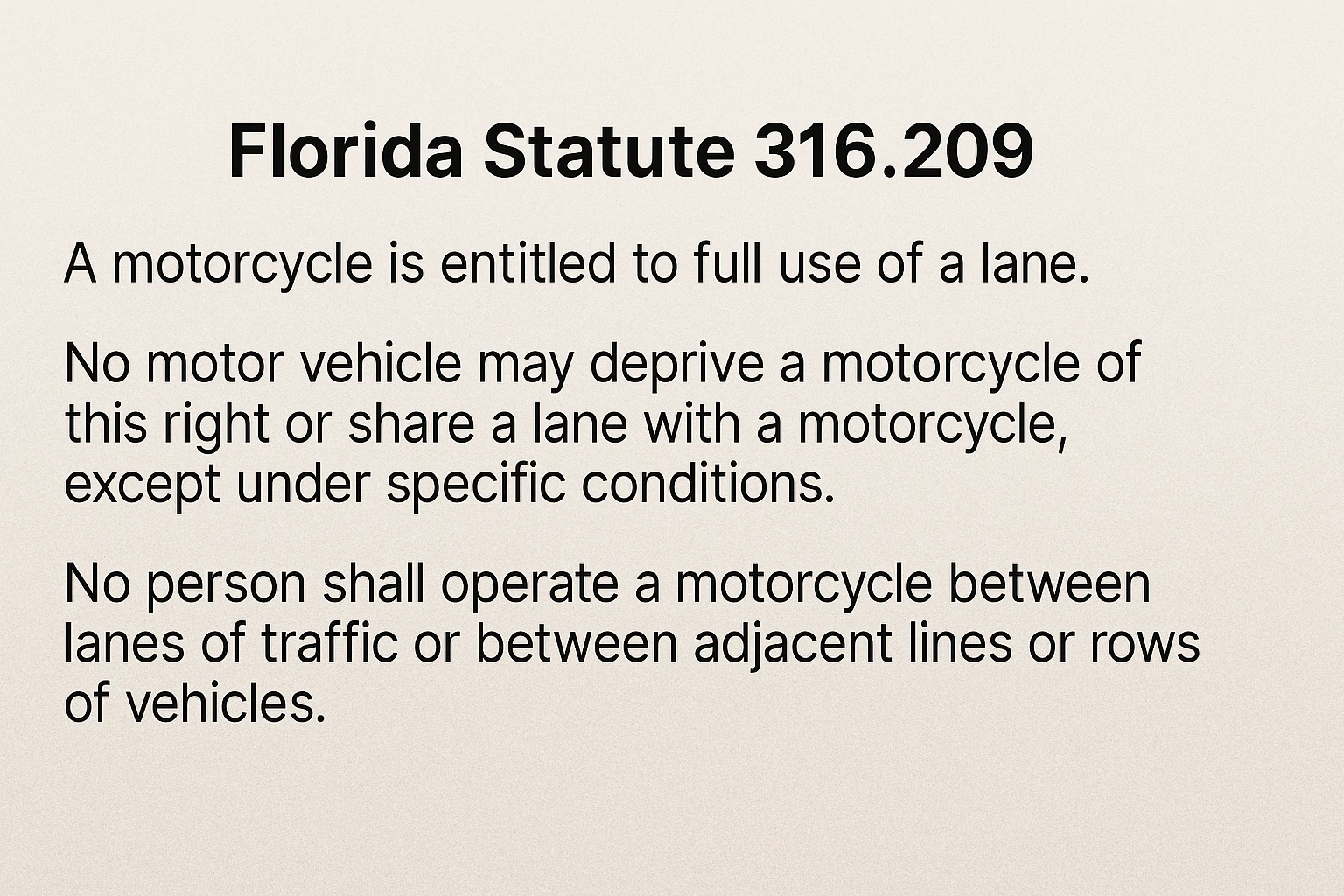
The law is written in simple terms. It says motorcycles can use a full lane. No other vehicle can block or share that lane unless allowed. It also says a motorcycle cannot pass another vehicle in the same lane. That includes cars, trucks, and other motorcycles.
The law also bans riding between lanes of traffic. That means no lane splitting. There is one exception. Two motorcycles may share one lane if both agree. They may ride side by side. But they cannot pass each other or other cars in the same lane.
Florida’s rule shows that lawmakers see lane splitting as unsafe. The law does not give any space for debate. It does not change based on traffic or weather. Lane splitting is not legal in Florida.
Why Some Riders Still Split Lanes
Many riders still do it. Some feel it keeps them safe. Traffic in Florida is often slow. Engines get hot. Riders want to keep air flowing over their engines. Others try to save time. They feel trapped between cars and want a way out.
Some riders come from states where the law is different. In California, lane splitting is legal. A rider who moves to Florida may not know the rule has changed. Others know the law but take the risk anyway.
But the reasons do not change the rule. A police officer will not care if your bike gets hot or you are late for work. Lane splitting is illegal. If you do it, you take the risk.
What Happens If You Split Lanes
The state sees lane splitting as a moving violation. That means you may get a ticket. You may have to pay a fine. You may also get points on your license. Points lead to higher insurance costs. Too many points can lead to a license suspension.
The fine for lane splitting may range from $100 to $150. Court costs can add more. If you fight the ticket and lose, you may pay even more. If your action causes a crash, you may face charges like reckless driving. That brings bigger fines and even jail time.
Your insurance company may raise your rate. They may drop your policy. If you cause injury or damage, the other driver may sue you. Lane splitting might seem harmless, but it brings real risks.
Lane Filtering Is Not the Same Thing
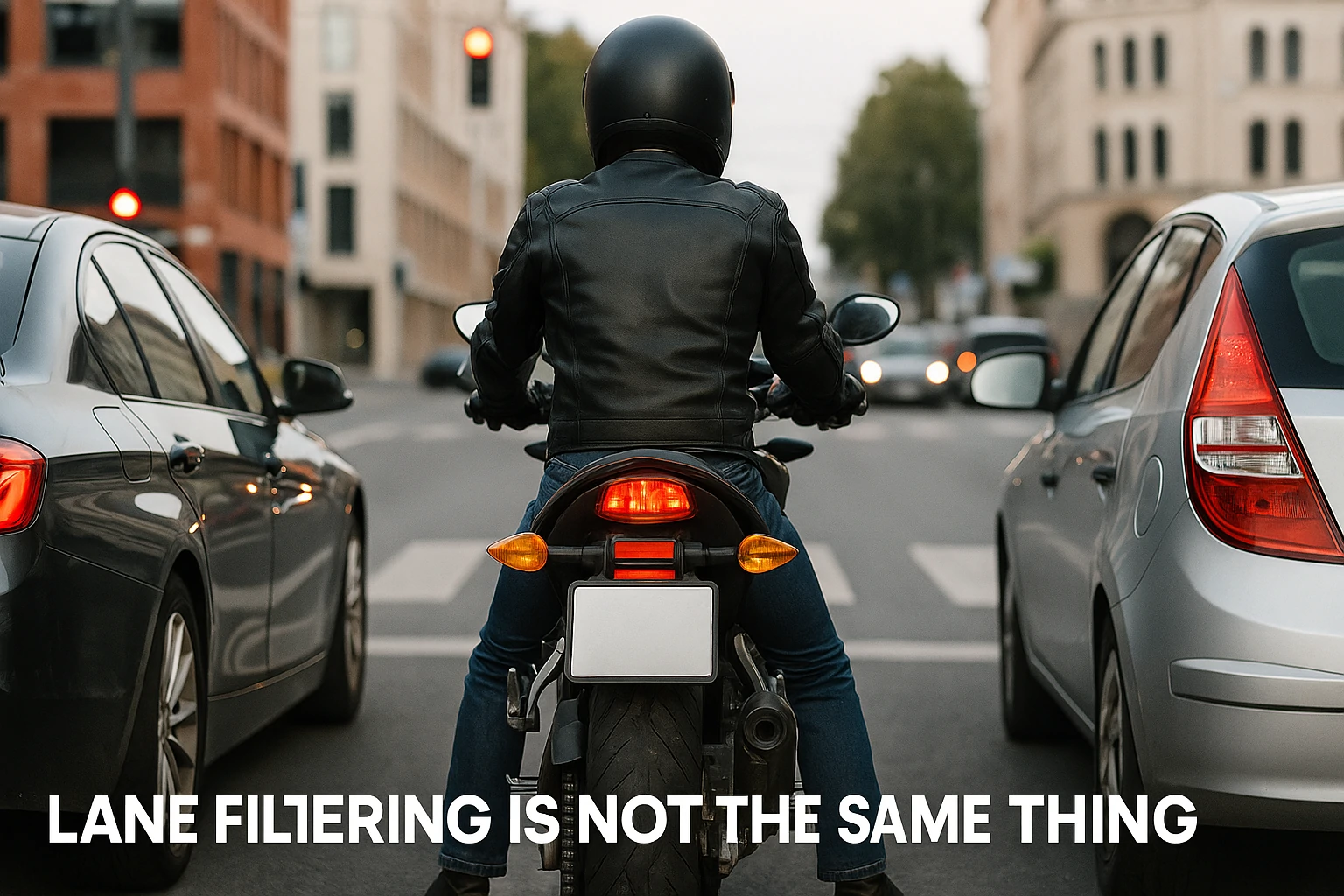
Some people talk about lane filtering. That means a motorcycle moves to the front of stopped traffic at a red light. It does not happen at high speeds. Riders do it to avoid being rear-ended at stoplights.
Lane filtering is not legal in Florida either. The law does not allow any movement between lanes. Whether traffic is fast or stopped, the rule stays the same. Filtering is treated like lane splitting. It is not allowed.
Riders must stay behind other vehicles, even at red lights. Moving to the front puts them at risk of a ticket. It may also cause road rage. Drivers often see it as unfair. That can create more problems.
What Other States Allow
Not all states follow the same rule. California allows lane splitting. It is the only state with a law that clearly says it is legal. The California Highway Patrol even gives safety tips for it.
Utah passed a law to allow lane filtering. Riders may move between cars only in certain situations. Arizona and Montana have similar laws. They allow low-speed filtering under strict rules.
Most states, like Florida, do not allow it. Some states have no clear law, but police still issue tickets. Riders must know the law in each state they travel through. What works in one state can cost you in another. You can also check out how lane splitting laws compare in Texas here.
How Florida Compares to California on Lane Splitting
California stands alone on this issue. It is the only U.S. state that allows lane splitting statewide. Riders in California can move between cars in slow traffic. The state even provides safety tips through the highway patrol. Many view it as a legal way to ease congestion and reduce crashes.
Florida takes a different path. It does not allow motorcycles to split lanes under any condition. The law in Florida gives no exceptions. Riders must stay in their lane, no matter how slow traffic moves. This rule applies to highways, local roads, and city streets.
California riders follow strict speed limits when they split lanes. They must stay close to the flow of traffic and avoid sudden moves. Florida law gives riders no such option. It treats all lane splitting the same, illegal.
Some Florida riders feel frustrated when they see what California allows. But each state sets its own traffic laws. What works in one place may not fit another. Until lawmakers change the rule, Florida riders must ride within the lane.
Common Myths About Lane Splitting in Florida
Many riders believe things about lane splitting that are simply not true. These myths cause confusion and may lead to legal trouble. Knowing what is false helps riders stay safe and avoid costly mistakes.
One common myth says lane splitting is legal in slow traffic. This is false. Florida law does not allow it at any speed. Whether traffic moves at five miles per hour or fifty, the rule does not change. A motorcycle must stay in its lane.
Another false belief says police ignore lane splitting. Some riders think they will never get stopped. That is wrong. Many riders have received tickets for it. Officers may issue fines even if no crash happens. The risk is always there.
Some think lane splitting is allowed near red lights. This is also false. Moving to the front of the line is still illegal. It does not matter if traffic is stopped. The law clearly says no movement between lanes.
A few riders claim the law is not clear. That is incorrect. Florida Statute 316.209 makes the rule easy to understand. It blocks all forms of lane splitting. No gray area exists in the text. Believing these myths leads to unsafe choices.
Real Crash Examples from Florida Roads
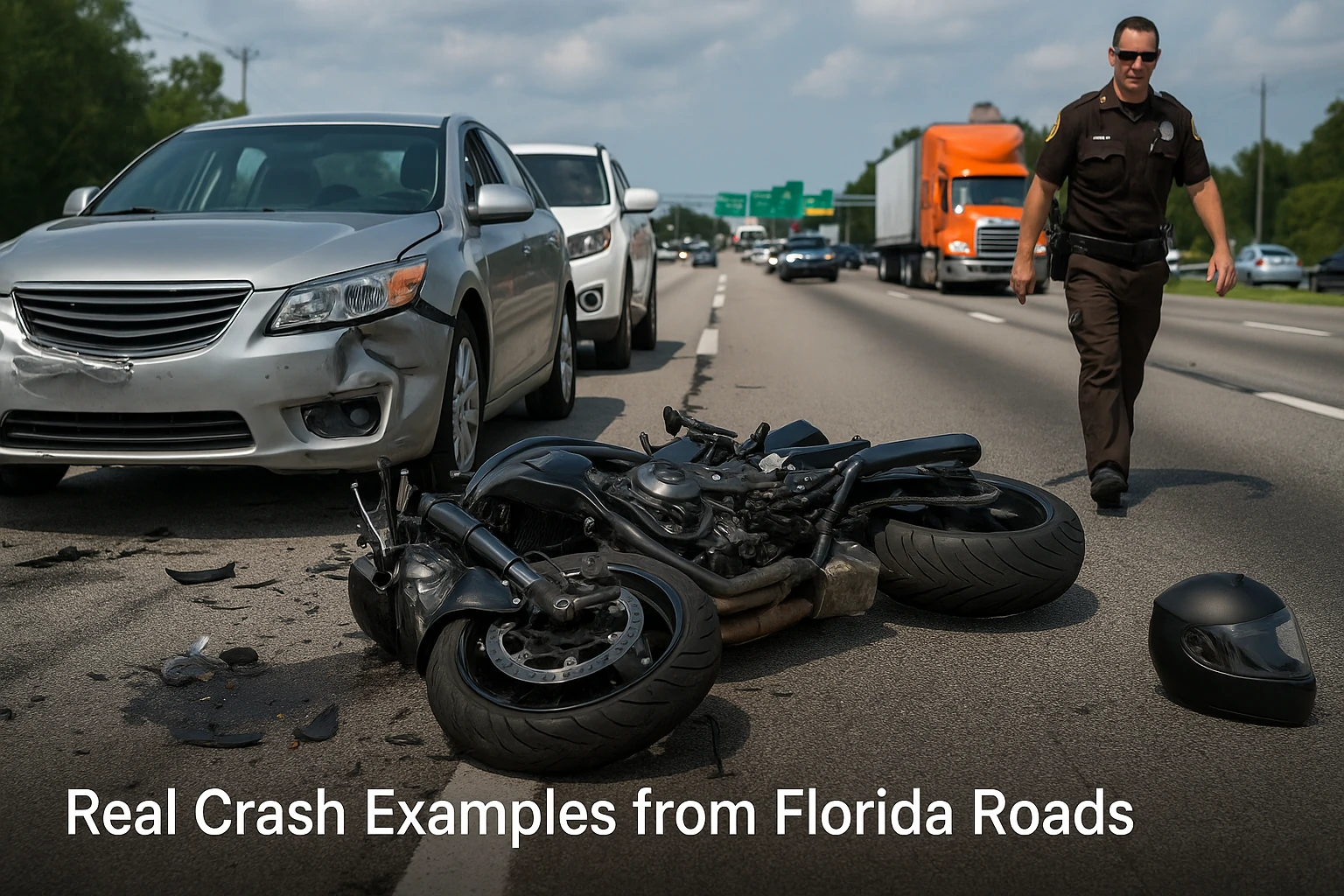
Florida has seen many crashes tied to lane splitting. These cases show how risky the action can be. Even skilled riders have paid the price.
In one case near Fort Lauderdale, a rider moved between cars during evening traffic. A driver changed lanes without signaling. The motorcycle struck the rear quarter panel and flipped. The rider suffered broken ribs and head trauma. Police issued a ticket to the rider, not the driver. The report listed illegal lane movement as the cause.
Another crash happened on I-4 near Orlando. A motorcycle tried to squeeze between two trucks. One truck drifted slightly due to road debris. The bike clipped the trailer and slid across three lanes. Traffic stopped for almost an hour. The rider survived but lost the bike. Insurance refused the claim because the action broke the law.
A third crash took place in Miami. The rider filtered to the front of stopped cars at a red light. A car door opened suddenly. The bike hit the door and flipped over. The driver was not charged. The rider got a fine and points on the license. Even though no one else was hurt, the rider faced $2,000 in repair costs.
These real stories show one fact. Lane splitting leads to serious outcomes. The law does not protect the rider when things go wrong. The risk is not worth it.
What Florida Motorcycle Safety Courses Teach About Lane Splitting
Motorcycle safety courses in Florida do not support lane splitting. These classes teach new riders how to handle traffic. They focus on safe habits, not shortcuts.
The Basic Rider Course, approved by the Florida Rider Training Program, explains road laws in simple steps. Instructors tell students to stay in one lane. They stress that riding between cars is illegal and dangerous. The course includes real examples of crashes caused by lane splitting.
Safety trainers also teach riders how to handle slow traffic. They recommend keeping a safe following distance. They also suggest ways to avoid heat buildup on the bike without breaking the law. Students learn how to manage risk without taking illegal actions.
The course does not tell riders how to split lanes. It tells them not to do it. Riders who pass the course get a license with clear rules. Lane splitting is not one of the allowed moves.
Even experienced riders take advanced courses in Florida. These classes repeat the same rule. Stay in your lane. Watch for blind spots. Do not ride between cars. The message is always the same. Follow the law. Stay safe.
Florida Motorcycle Clubs’ Opinions on Lane Splitting
Motorcycle clubs across Florida hold mixed views on lane splitting. Some support legal reform. Others believe the current law keeps riders safe. Most agree that the issue needs clear facts and strong debate.
Clubs in cities like Tampa, Jacksonville, and Miami often talk about lane splitting during group rides or safety meetings. Some riders believe it should be legal under strict rules. They want speed limits, training, and safe conditions. These riders say it could reduce traffic stress and protect riders from rear-end crashes.
Other clubs take a firm stand against it. They say Florida roads are too crowded. Lanes are too narrow. Drivers do not watch their mirrors. These clubs believe lane splitting puts all riders in danger. They teach members to follow the law and ride with patience.
Many club leaders say the problem is awareness. They feel most drivers do not understand motorcycle needs. That makes lane splitting even more dangerous. Until drivers learn to share the road, these leaders say it is better to avoid risky moves.
Some clubs have started talking to lawmakers. They want a seat at the table if the law ever changes. They believe riders should help shape any new rule. But most agree on one thing. Riders must know the current law and follow it at all times.
What Florida Highway Patrol Says About Lane Splitting

The Florida Highway Patrol makes its position clear. Lane splitting is not legal. Officers are trained to spot it. They treat it like any other moving violation. Riders caught breaking the rule can face fines and points on their license.
The patrol often warns riders through public safety campaigns. These messages appear on social media, highway signs, and at community events. They remind riders that lane splitting puts them at risk. The patrol also urges drivers to give motorcycles space and stay alert in traffic.
Crash reports handled by the highway patrol often show how lane splitting causes harm. Many of these reports list the rider as at fault. This happens even if a car changed lanes. If the motorcycle moved between lanes, it broke the law. The patrol uses this data to explain why the law must stay in place.
Troopers also speak at rider training programs. They explain how the law protects both riders and drivers. Officers tell students to stay in one lane and never weave through traffic. These messages come from real cases, not just rule books.
The Florida Highway Patrol believes in safety first. It supports rules that keep all drivers safe. Until lawmakers change the law, the patrol will keep enforcing it. Riders who split lanes take a legal and personal risk.
How Lane Splitting Could Affect Florida’s No-Fault Insurance Laws
Florida has a no-fault insurance system. Each driver’s own policy pays for injuries after a crash. This applies no matter who caused the accident. The rule changes if a motorcyclist breaks traffic law. Lane splitting is illegal under Florida law. A rider who crashes during this act can lose legal protection. Courts may cut or deny compensation.
Insurance companies also review fault in motorcycle crashes. Even in a no-fault state, fault still matters. If a rider gets injured while splitting lanes, an insurer may blame the rider. This can lead to higher premiums, loss of coverage, or large personal costs. Breaking traffic law can bring more than a fine. It can bring lasting financial damage.
What to Do If You’re Hit While Lane Splitting in Florida
If you get hit while lane splitting in Florida, you must act fast. First, check yourself for injuries. Then call 911. Do not leave the scene. Even if you feel okay, wait for help and give a full report.
Tell the truth to the police. Do not argue or admit fault. Lane splitting is illegal, but fault still depends on what happened. Take photos of the crash. Get names of any witnesses. Save all medical bills and records.
Call your insurance company after the crash. Answer questions, but stay brief. Do not say you broke the law. Let the facts speak. You may also need a lawyer. If the crash caused injury or damage, legal advice can help you protect your rights. The law will not erase the act, but it can help reduce the fallout.
Tips to Handle Heavy Traffic Without Lane Splitting
Florida traffic can feel slow and stressful. But you still have smart options. Stay alert in every lane. Keep a safe gap from the car in front of you. This gives time to brake and space to escape danger.
Pick routes with less traffic when possible. Use early morning or late-night hours. Avoid peak times on highways. Choose roads with wide lanes and better flow.
Keep your engine cool in traffic. Turn off the bike if you expect a long stop. Wear light gear in summer to reduce heat. Use your mirrors often and stay visible. Flash your brake light to warn others when traffic slows.
These simple habits can help you ride safely without breaking the law. Patience on the road protects both your bike and your life.
| Tip | What to Do |
|---|---|
| Stay alert | Watch every lane. Look ahead and around. Always expect sudden stops. |
| Keep a safe gap | Leave space in front. It gives time to brake and room to escape danger. |
| Choose better routes | Avoid peak hours. Use roads with fewer cars and wider lanes. |
| Ride at better times | Try early mornings or late evenings to miss heavy traffic. |
| Keep your engine cool | Turn off the bike at long stops. Let it rest. Avoid overheating. |
| Dress smart | Use light, breathable gear during hot months. Stay comfortable and focused. |
| Use your mirrors | Check them often. Stay aware of cars behind and beside you. |
| Stay visible | Flash your brake light when slowing. Wear bright colors to be seen. |
| Be patient | Trust the process. Riding legal keeps you safe and ticket-free. |
The Future of Motorcycle Law Reform in Florida

Florida lawmakers have not changed the rule on lane splitting. But the topic is not finished. Some rider groups still push for reform. They want legal rights to move between cars in slow traffic. They believe rules can be added to keep the move safe.
Bills to allow lane splitting have not passed. They often stall before a vote. Many drivers, police groups, and insurance experts oppose change. They worry that legal lane splitting may cause more crashes, not fewer.
Still, laws can shift over time. Other states like Utah and Arizona have tested new rules. If those changes bring fewer crashes, Florida may follow one day. But until then, the law remains the same. Riders must stay in their lane. Breaking the rule still brings risk.
Do Florida Drivers Understand Motorcycle Behavior?
Many Florida drivers do not understand how motorcycles work. They expect all vehicles to move the same way. But bikes are smaller, faster, and more exposed. This lack of awareness causes confusion on the road.
Drivers often miss motorcycles in blind spots. They do not leave space when passing or stopping. They may not expect a bike to slow without brake lights. Some think motorcycles can stop or swerve faster than they actually can.
This misunderstanding adds risk. It can turn small mistakes into big crashes. Until drivers learn more about motorcycles, road safety will suffer. Many drivers also misunderstand basic traffic laws. Learn how pedestrian rules vary in other states, like jaywalking laws in California. Better education and more public awareness can help close the gap. Riders and drivers both share the road. They must understand each other to stay safe.
What Happens If a Car Hits You While You Split Lanes?
If a car hits you while you split lanes, the outcome may not favor you. Lane splitting is illegal in Florida. That fact will shape how police and insurers view the crash. Even if the driver acted carelessly, you may still carry most of the blame.
The officer’s report will likely name you as the at-fault rider. This affects insurance claims, court cases, and injury payouts. Your insurer may refuse to cover the damage. The other driver may sue you for their losses. You could face both legal and financial trouble.
Courts see broken laws as signs of fault. The act of lane splitting gives the other party a strong defense. Even if they moved into your path, you rode where the law says you should not. That mistake can cost you more than just your bike.
How Lane Splitting Affects Motorcycle Visibility in Florida

Lane splitting makes motorcycles harder to see. Drivers expect traffic to move in one lane at a time. When a bike moves between cars, it enters blind spots. Many drivers do not check for motorcycles in that space. This raises the risk of sudden impact.
Mirrors do not always show a fast-approaching bike. If a car changes lanes, the driver may not see the rider coming. Even a small move can lead to a crash. Lane splitting takes away the chance for drivers to react.
Visibility keeps riders safe. When you ride where drivers expect you, they can adjust. Lane splitting removes that safety. It places the rider in a space meant to stay clear. That choice can lead to a dangerous surprise.
What to Tell New Riders About Lane Splitting in Florida
New riders often copy what they see. If they watch others split lanes, they may think it is legal. That is a mistake. Every new motorcyclist in Florida must know one fact, lane splitting is not allowed under state law.
Beginner riders must build good habits from the start. They must stay in their lane, follow the flow of traffic, and avoid shortcuts. Breaking the rule can lead to tickets, higher insurance, or even a crash. Early mistakes can bring lasting costs.
Trainers, club leaders, and experienced riders should repeat this message. Lane splitting may look easy, but the law says no. Teaching new riders the truth can save lives.
Lane Splitting vs. Legal Riding in Florida
| Action | Legal in Florida | Risk Level | Common Outcome |
|---|---|---|---|
| Lane Splitting | No | High | Ticket, crash, denied claims |
| Lane Sharing (with 1 bike) | Yes | Low | Legal, no penalty |
| Riding in own lane properly | Yes | Low | Safe, no issue |
| Filtering at red lights | No | Medium to High | Ticket, driver conflict |
Can Florida Riders Petition to Legalize Lane Splitting?
Florida riders have the right to ask for change. Any person or group can start a petition. If enough people support the idea, lawmakers may listen. That is how laws can begin to shift.
Rider groups in other states have helped pass new motorcycle laws. They spoke at public meetings. They sent letters to lawmakers. They showed data to prove the change helped. Florida riders can do the same.
To start, riders must stay informed. They can follow bills on the Florida Senate or House websites. They can work with clubs, safety groups, or legal advocates. Change takes time. But if voices stay strong, the law may one day allow safe lane splitting.
Is Florida Planning to Change the Law?
So far, Florida has not passed any bill to allow lane splitting. Some rider groups want it. They say it improves safety and reduces traffic. But lawmakers have not shown much support.
Some bills have come up in the past. None of them passed. Many drivers and police officers oppose lane splitting. They say it causes more problems than it solves. Until lawmakers act, the law stays the same.
Change may come one day. Other states may pass new laws. Studies may show it works. But for now, Florida riders must obey the current law. Lane splitting remains illegal.
Why Some People Want It Legal
People who support lane splitting say it helps in many ways. It lowers the risk of rear-end crashes. It lets bikes move out of harm’s way. It keeps traffic flowing better. It stops engines from overheating.
They also point to studies. Some research shows that riders who split lanes in slow traffic get hurt less often. It may reduce the number of crashes in some cases. Supporters say Florida should give riders a safe way to use the road.
They believe smart laws can guide how lane splitting works. They want limits on speed and space. But they believe a full ban hurts riders more than it helps.
Why Some People Want It Banned
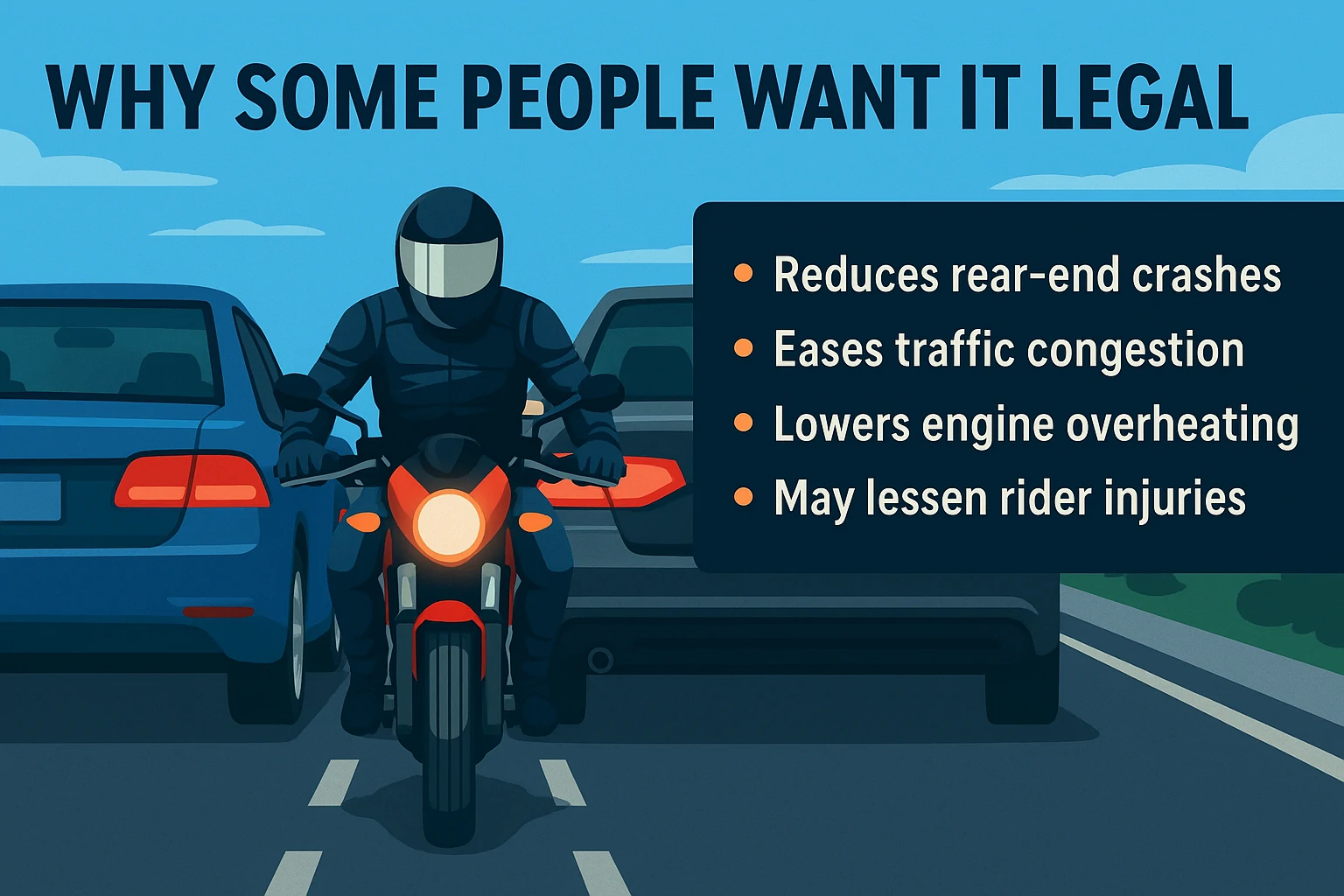
Many people want to keep the ban. They feel lane splitting is unsafe. They say drivers do not expect it. When a car changes lanes, a bike could get hit. Riders may also clip mirrors or hit doors. Small mistakes lead to big harm.
Drivers often feel upset when bikes pass them in traffic. Some see it as rude. That leads to road rage. A driver may swerve or try to block the rider. This makes the road more dangerous for everyone.
Some roads are too narrow for lane splitting. Some riders lack the skill. Police say it makes their job harder. These reasons lead many to say the ban should stay in place.
How Insurance Plays a Role
If you split lanes and crash, your insurance may not help you. You broke the law. That can affect who gets blamed. Even in a no-fault state, fault still matters in court and in claims.
Your insurer may refuse to pay. You may have to cover damage to your bike. You may have to pay the other driver. You may also lose your coverage. Rates often go up after a violation.
If someone sues you, you may owe even more. A judge may say you were wrong for breaking the law. That can hurt your case. Lane splitting may seem quick, but the cost can last a long time.
What Riders Can Do Instead
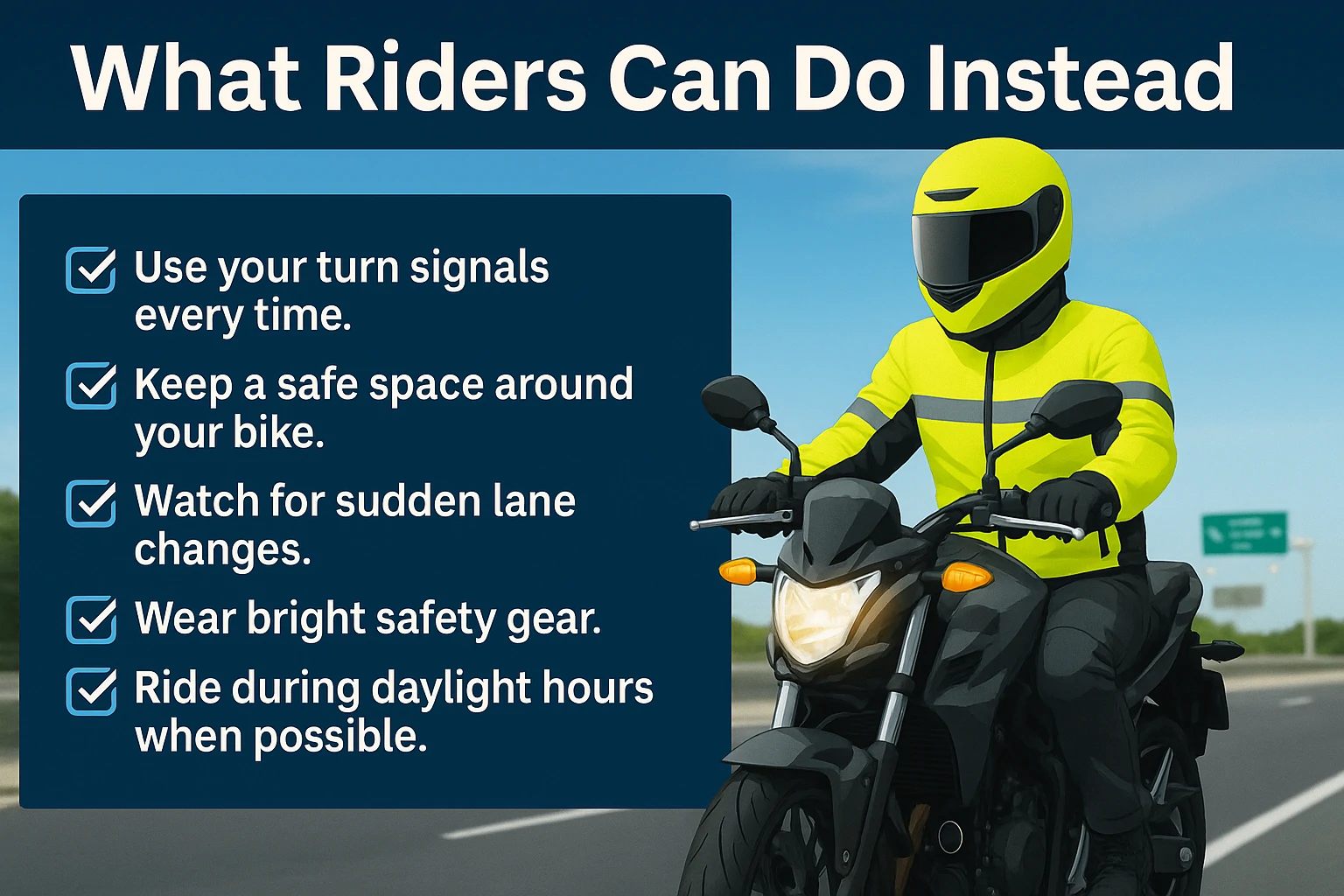
If you ride in Florida, stay safe and follow the law. Do not split lanes. Do not filter at red lights. Wait in line like other drivers. Use your signals. Keep space around your bike. Watch for sudden moves by cars.
Wear the right gear. A helmet, gloves, and jacket help protect you. Bright colors help drivers see you. Check your mirrors and your blind spots. Ride with care.
Plan your route. Avoid rush hour if you can. Take roads with fewer cars. Ride in daylight. These small steps help you stay safe without breaking the law.
- Use your turn signals every time.
- Keep a safe space around your bike.
- Watch for sudden lane changes.
- Wear bright safety gear.
- Ride during daylight hours when possible.
Could the Law Change Later?
It might. Other states are testing new laws. Some allow lane filtering at low speeds. Some support pilot programs. Florida may follow one day. But laws change slowly. Many groups must agree.
If more states show good results, Florida may look again. Until then, riders must follow the rule. The law bans lane splitting. Riders who break it face the risk.
Stay updated on new laws. Support groups who speak for safe riders. Share facts, not fear. But always obey the law on the road.
Final Thoughts
Florida does not allow lane splitting. The law is clear. A motorcycle must stay in one lane, just like every other vehicle. Riders who pass between cars break the law, even in slow traffic. The risk is not only legal, it is physical, financial, and personal.
Some riders believe lane splitting saves time or keeps them safe. But crashes, fines, and insurance problems often follow. Florida law gives no exceptions. If a rider breaks this rule, they may face lasting harm.
Safety matters more than speed. Patience on the road can protect your life, your license, and your wallet. Learn the law. Respect it. Help others understand it. Share the truth with new riders. If change comes one day, let it come through the right process, not through risky moves.
Florida roads can be tough. But smart choices can make each ride smoother. Stay sharp. Ride legal. Protect what matters most.
❓ Frequently Asked Questions
Q. Can a motorcycle ride between cars in Florida traffic?
Florida law does not allow motorcycles to ride between cars. Riders must stay in one lane and follow normal traffic flow.
Q. What is the penalty for lane splitting in Florida?
Riders who split lanes may get a traffic ticket. Fines often range from $100 to $150. Police may add points to the license, and insurance costs can rise.
Q. Is lane sharing between two motorcycles legal in Florida?
Two motorcycles can ride side by side in the same lane if both riders agree. This is the only exception to the lane rule under state law.
Q. Does lane splitting affect insurance after a crash?
Breaking the lane law during a crash may cause the insurer to deny a claim. Riders may be found at fault and pay out of pocket for damage or injury.
Q. Are there any cases where lane splitting is allowed in Florida?
State law does not give any exceptions. Riders cannot split lanes, even in traffic jams, at red lights, or during slow traffic.
This article is for informational use only. It does not provide legal advice. Traffic laws can change, and each case may involve different facts. Always check Florida statutes or speak with a licensed attorney before making legal decisions. The writers and publishers are not responsible for how this information is used.

